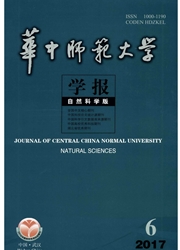

 中文摘要:
中文摘要:
通过分子结构预测血脑屏障通透性是一个颇具挑战性的课题.建立了一个预测化合物分子的血脑屏障分配系数(logBB)的QSAR模型.该模型由表示分子大小、拓扑性质和脂水分配性质的QSAR参数组成.模型被用来预测52个化合物的血脑屏障分配系数,并通过测试集(从52个化合物种选取10个)进行验证,预测值一实验值的相关系数平方(R^2)为0.974,均方差(MSE)为0.0172.验证结果显示该模型大大优于传统使用的多元线性回归模型.因此,该模型可以用于预测药物分子和类似药物分子的血脑屏障通透性。
 英文摘要:
英文摘要:
The challenging problem of modeling blood-brain barrier partitioning is approached through molecular structure. Here a QSAR model was developed for in vivo logarithm value of blood-brain concentration ratio (LogBB), by the method of Bayesian Regularization Neural Network (BRNN). The model consists of eight structure descriptors which elucidate topological properties, partition coefficient and size of molecules. The model for a set of 52 chemicals is validation through a use of external prediction set (10 in 52 chemicals, R^2 =0. 974, MSE=0. 0172), the quality of validation statistics support the claim that this model is much better than multi-variance linear regression and may be use for estimation of LogBB value for drug and drug-like molecules.
 同期刊论文项目
同期刊论文项目
 同项目期刊论文
同项目期刊论文
 期刊信息
期刊信息
